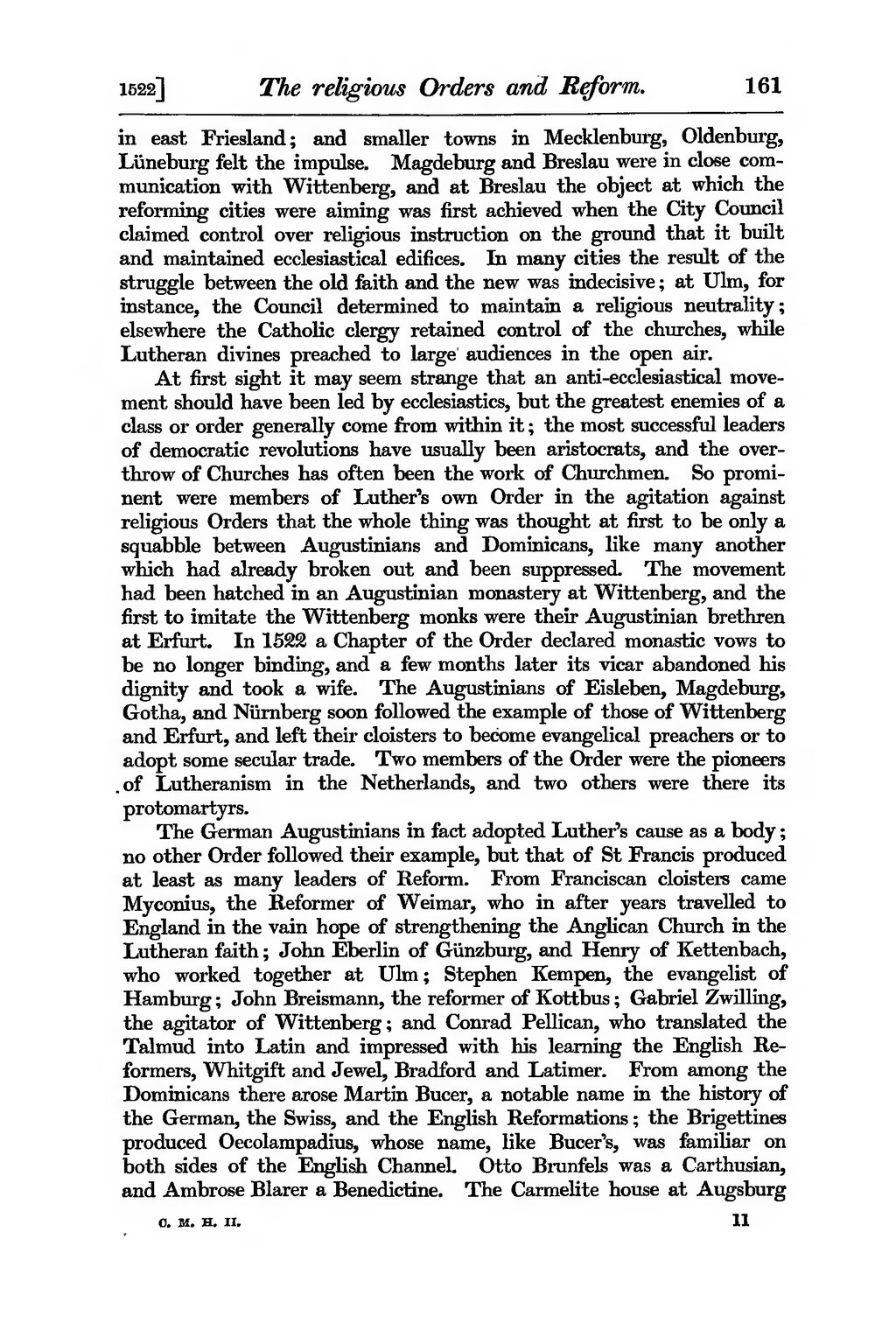in east Friesland; and smaller towns in Mecklenburg, Oldenburg, Liineburg felt the impulse. Magdeburg and Breslau were in close communication with Wittenberg, and at Breslau the object at which the reforming cities were aiming was first achieved when the City Council claimed control over religious instruction on the ground that it built and maintained ecclesiastical edifices. In many cities the result of the struggle between the old faith and the new was indecisive; at Ulm, for instance, the Council determined to maintain a religious neutrality; elsewhere the Catholic clergy retained control of the churches, while Lutheran divines preached to large audiences in the open air.
At first sight it may seem strange that an anti-ecclesiastical movement should have been led by ecclesiastics, but the greatest enemies of a class or order generally come from within it; the most successful leaders of democratic revolutions have usually been aristocrats, and the overthrow of Churches has often been the work of Churchmen. So prominent were members of Luther's own Order in the agitation against religious Orders that the whole thing was thought at first to be only a squabble between Augustinians and Dominicans, like many another which had already broken out and been suppressed. The movement had been hatched in an Augustinian monastery at Wittenberg, and the first to imitate the Wittenberg monks were their Augustinian brethren at Erfurt. In 1522 a Chapter of the Order declared monastic vows to be no longer binding, and a few months later its vicar abandoned his dignity and took a wife. The Augustinians of Eisleben, Magdeburg, Gotha, and Nürnberg soon followed the example of those of Wittenberg and Erfurt, and left their cloisters to become evangelical preachers or to adopt some secular trade. Two members of the Order were the pioneers of Lutheranism in the Netherlands, and two others were there its protomartyrs.
The German Augustinians in fact adopted Luther's cause as a body; no other Order followed their example, but that of St Francis produced at least as many leaders of Reform. From Franciscan cloisters came Myconius, the Reformer of Weimar, who in after years travelled to England in the vain hope of strengthening the Anglican Church in the Lutheran faith; John Eberlin of Gunzburg, and Henry of Kettenbach, who worked together at Ulm; Stephen Kempen, the evangelist of Hamburg; John Breismann, the reformer of Kottbus; Gabriel Zwilling, the agitator of Wittenberg; and Conrad Pellican, who translated the Talmud into Latin and impressed with his learning the English Reformers, Whitgift and Jewel, Bradford and Latimer. From among the Dominicans there arose Martin Bucer, a notable name in the history of the German, the Swiss, and the English Reformations; the Brigettines produced Oecolampadius, whose name, like Bucer's, was familiar on both sides of the English Channel. Otto Brunfels was a Carthusian, and Ambrose Blarer a Benedictine. The Carmelite house at Augsburg
